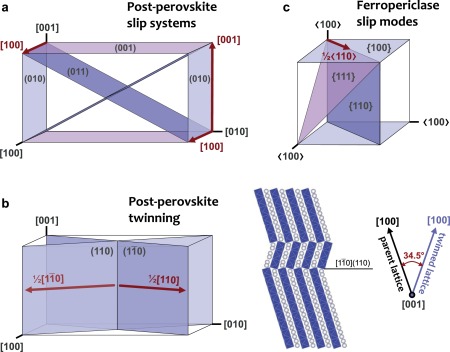RheoMan: a five-year, ERC-funded (Advanced Grant), project to model the rheology of the Earth's mantle
Apr 10, 2018 New publication in EPSL Results
In a new article just published in EPSL, we introduce the most recent results of our group on the elementary deofrmation mechanisms in post-perovskite, including mechanical twinning, in polycrystal plasticity simulations to predict crystal preferred orientations (CPO) development and seismic anisotropy in D″.
We use a forward multiscale model that couples atomistic modeling of intracrystalline plasticity mechanisms (dislocation glide ± twinning) in MgSiO3 post-perovskite (PPv) and periclase (MgO) at lower mantle pressures and temperatures to polycrystal plasticity simulations. Models that take into account twinning in PPv explain most observations of seismic anisotropy in D″, but heterogeneity of the flow at scales <1000 km is needed to comply with the seismological evidence for low apparent birefringence in D″.

Reference:
A. Tommasi, A.M. Goryaeva, Ph. Carrez, P. Cordier & D. Mainprice (2018) Deformation, crystal preferred orientations, and seismic anisotropy in the Earth’s D" layer. Earth and Planetary Science Letters, 492, 35-46. https://doi.org/10.1016/j.epsl.2018.03.032

